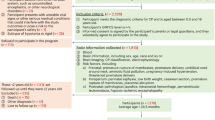Abstract
In addition to its function in the nervous system, γ-aminobutyric acid (GABA) has been implicated in mouse craniofacial development by the results of both teratological1–3, and genetic studies4. We previously reported that disruption of the cleft palate 1 (cp1) locus, closely linked to the pink-eyed dilution (p) locus on mouse chromosome 7, causes a 95% penetrant, recessive, neonatally-lethal cleft palate (CP) in mice homozygous for the p4THO-II deletion4. We proposed that the β3 subunit gene (Gabrb3) of the GABAA receptor might be a candidate for cp1 (ref. 4); our earlier studies4,5 had localized cp1 to an interval beginning distal to the gene for the GABAA receptor α5 subunit (Gabra5) and ending within the Gabrb3 coding region. To test the hypothesis that deletion of Gabrb3, and not another gene in the interval, causes CP, we performed an experiment to rescue the CP phenotype by introducing a Gabrb3 trans-gene into p4THO-II homozygotes. We now show that such transgenic mice are phenotypically normal, indicating that Gabrb3 is indeed the cp1 locus.
This is a preview of subscription content, access via your institution
Access options
Subscribe to this journal
Receive 12 print issues and online access
$209.00 per year
only $17.42 per issue
Buy this article
- Purchase on Springer Link
- Instant access to full article PDF
Prices may be subject to local taxes which are calculated during checkout
Similar content being viewed by others
References
Miller, R.P. & Becker, B.A. Teratogenicity of oral diazepam and diphenylhydantoin in mice. Tox. App. Pharmac. 32, 53–61 (1975).
Wee, E.L. & Zimmerman, E.F. Involvement of GABA in palate morphogenesis and its relation to diazepam teratogenesis in two mouse strains. Teratology 28, 15–22 (1983).
Wee, E.L., Norman, E.J. & Zimmerman, E.F. Presence of GABA in embryonic palates of AJ and SWV mouse strains. J. Craniofac. Genet dev. Biol 6, 53–61 (1986).
Culiat, C.T. et al. Concordance between isolated cleft palate in mice and alterations within a region including the gene encoding the β3 subunit of the type A γ-aminobutyric acid receptor. Proc. natn. Acad. Sci. U.S.A. 90, 5105–5109 (1993).
Culiat, C.T., Stubbs, L.J., Montgomery, C.S., Russell, L.B. & Rinchik, E.M. Phenotypic consequences of the deletion of the γ3, α5 or β3 subunit of the type A γ-aminobutyric acid receptor in mice. Proc. natn. Acad. Sci. U.S.A. 91, 2815–2818 (1994).
Gunning, P., Leavitt, J., Muscat, G., Ng, S.-Y. & Kedes, L. A human β-actin expression vector system directs high level accumulation of antisense transcripts. Proc. natn. Acad. Sci. USA. 84, 4831–4835 (1987).
Ymer, S. et al. GABAA receptor β subunit heterogeneity: functional expression of cloned cDNAs. EMBO J. 8, 1665–1670 (1989).
Nicholls, R.D. et al. Evaluation of potential models for imprinted and non-imprinted components of human chr 15q11-13 syndromes by fine structure homology mapping in the mouse. Proc. natn. Acad. Sci. U.S.A. 90, 2050–2054 (1993).
Zimmerman, E.F. & Wee, E.L. Role of neurotransmitters in palate development. Curr. Topics dev. Biol. 19, 37–63 (1984).
Zimmerman, E.F. Role of neurotransmitters in palate development and teratologic implications. Prog. clin. biol. Res. 171, 283–294 (1985).
Laurie, D.J., Wisden, W. & Seeburg, P.H. The distribution of thirteen GABAA receptor subunit mRNAs in the rat brain II. Embryonic and postnatal development. J. Neurosci. 12, 4151–4172 (1992).
Zhang, J., Sato, M. & Tohyama, M. Different postnatal development profiles of neurons containing distinct GABAA receptor β subunit mRNAs. J. comp. Neurol. 308, 586–613 (1991).
Kirkness, E.F. & Fraser, C.M. A strong promoter element is located between alternative exons of a gene encoding the human γ-aminobutyric acid. J. biol. Chem. 268, 4420–4428 (1993).
Wagstaff, J. et al. Localization of the gene encoding the GABAA receptor β3 subunit to the Angelman/Prader-Willi region of human chr 15. Am. J. hum. Genet. 49, 330–337 (1991).
Butler, M.G. Prader-Willi syndrome: current understanding of cause and diagnosis. Am. J. med. Genet. 35, 319–332 (1990).
Clayton Smith, J. & Pembrey, M.E. Angleman Syndrome. J. med. Genet. 29, 412–415 (1992).
Brilliant, M.H. The mouse pink-eyed dilution locus: a model for aspects of Prader-Willi syndrome, Angelman syndrome and a form of Hypomelanosis of Ito. Mamm. Genome 3, 187–1191 (1992).
Butler, M.G. Prader-Willi syndrome: Current understanding of cause and diagnosis. Am. J. med. Genet. 35, 319–332 (1990).
Greger, V., Woolf, E. & Lalande, M. Cloning the breakpoints of a submicroscopic deletion in an Angelman syndrome patient. Hum. molec. Genet. 2, 921–924 (1993).
Hogan, B., Costantini, F. & Lacy, E. Manipulating the Mouse Embryo, A Laboratory Manual. (Cold Spring Harbor Laboratory Press, New York, 1986).
Author information
Authors and Affiliations
Rights and permissions
About this article
Cite this article
Culiat, C., Stubbs, L., Woychik, R. et al. Deficiency of the β3 subunit of the type A γ–aminobutyric acid receptor causes cleft palate in mice. Nat Genet 11, 344–346 (1995). https://doi.org/10.1038/ng1195-344
Received:
Accepted:
Issue Date:
DOI: https://doi.org/10.1038/ng1195-344
This article is cited by
-
Common basis for orofacial clefting and cortical interneuronopathy
Translational Psychiatry (2018)
-
Central nervous system effects of prenatal selective serotonin reuptake inhibitors: sensing the signal through the noise
Psychopharmacology (2013)
-
New insight into the role of the β3 subunit of the GABAA-R in development, behavior, body weight regulation, and anesthesia revealed by conditional gene knockout
BMC Neuroscience (2007)
-
X-ray-induced deletion complexes in embryonic stem cells on mouse chromosome 15
Mammalian Genome (2005)
-
Pathogenesis of peroxisomal deficiency disorders (Zellweger syndrome) may be mediated by misregulation of the GABAergic system viathe diazepam binding inhibitor
BMC Pediatrics (2004)



